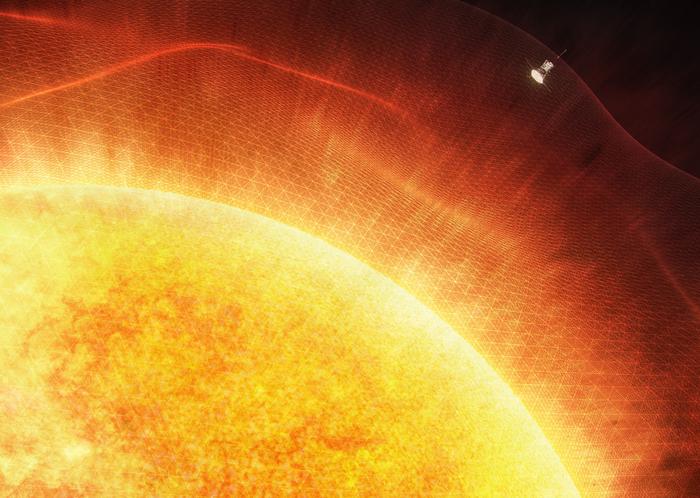NASA’s Parker Solar Probe accomplished a milestone on June 27, 2023 – its 16th orbit of the Sun. This included a close approach to the Sun (known as perihelion) on June 22, 2023, where the spacecraft came within 5.3 million miles of the solar surface while moving at 364,610 miles per hour. The spacecraft emerged from the solar flyby healthy and operating normally.

Credit: NASA
NASA’s Parker Solar Probe accomplished a milestone on June 27, 2023 – its 16th orbit of the Sun. This included a close approach to the Sun (known as perihelion) on June 22, 2023, where the spacecraft came within 5.3 million miles of the solar surface while moving at 364,610 miles per hour. The spacecraft emerged from the solar flyby healthy and operating normally.
On Aug. 21, 2023, Parker Solar Probe will swing past Venus for its sixth flyby of the planet. To prepare for a smooth course, the mission team at the Johns Hopkins Applied Physics Laboratory (APL) applied a small trajectory correction maneuver on June 7, 2023, the first course correction since March 2022. This flyby will be the sixth of seven planned flybys of Venus during Parker’s primary mission. Parker uses Venus’ gravity to tighten its orbit around the Sun and set up a future perihelion at just 4.5 million miles from the Sun’s surface. As the Sun becomes increasingly active, this perihelion will be especially important to learning more about heliophysics.
Parker Solar Probe was developed as part of NASA’s Living With a Star program to explore aspects of the Sun-Earth system that directly affect life and society. The Living With a Star program is managed by the agency’s Goddard Space Flight Center in Greenbelt, Maryland, for NASA’s Science Mission Directorate in Washington. APL designed, built, and operates the spacecraft and manages the mission for NASA.




